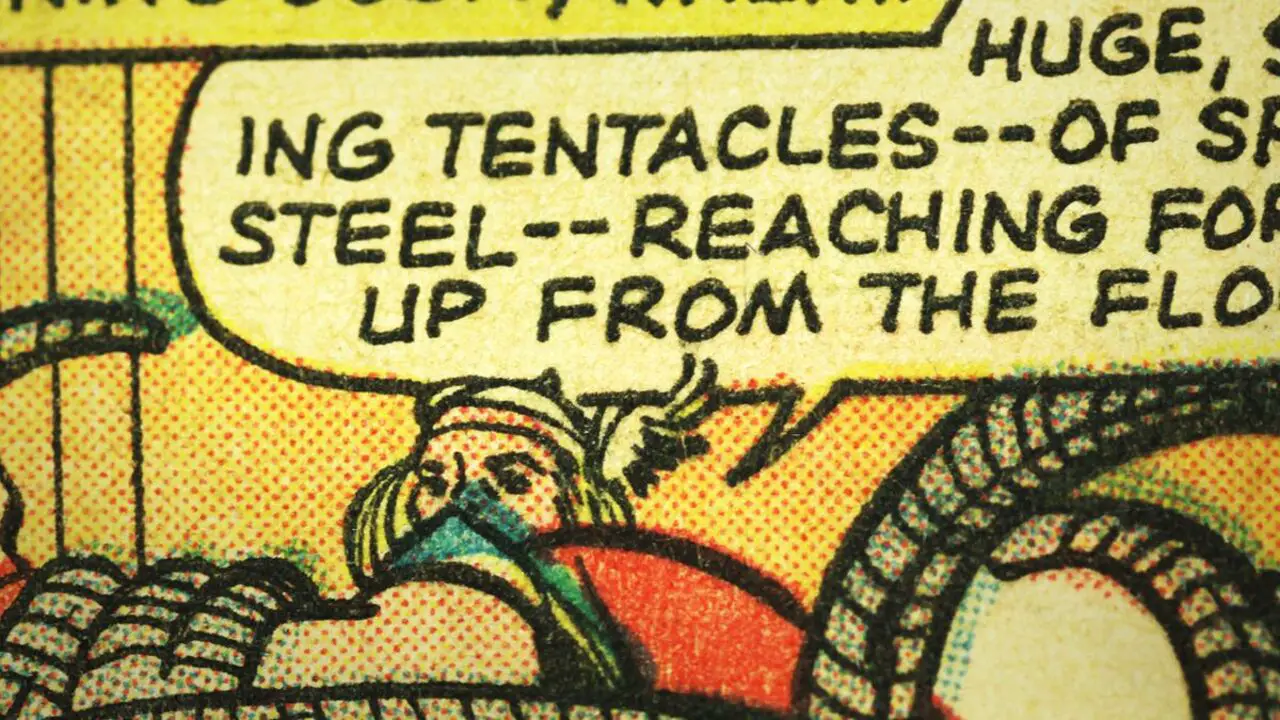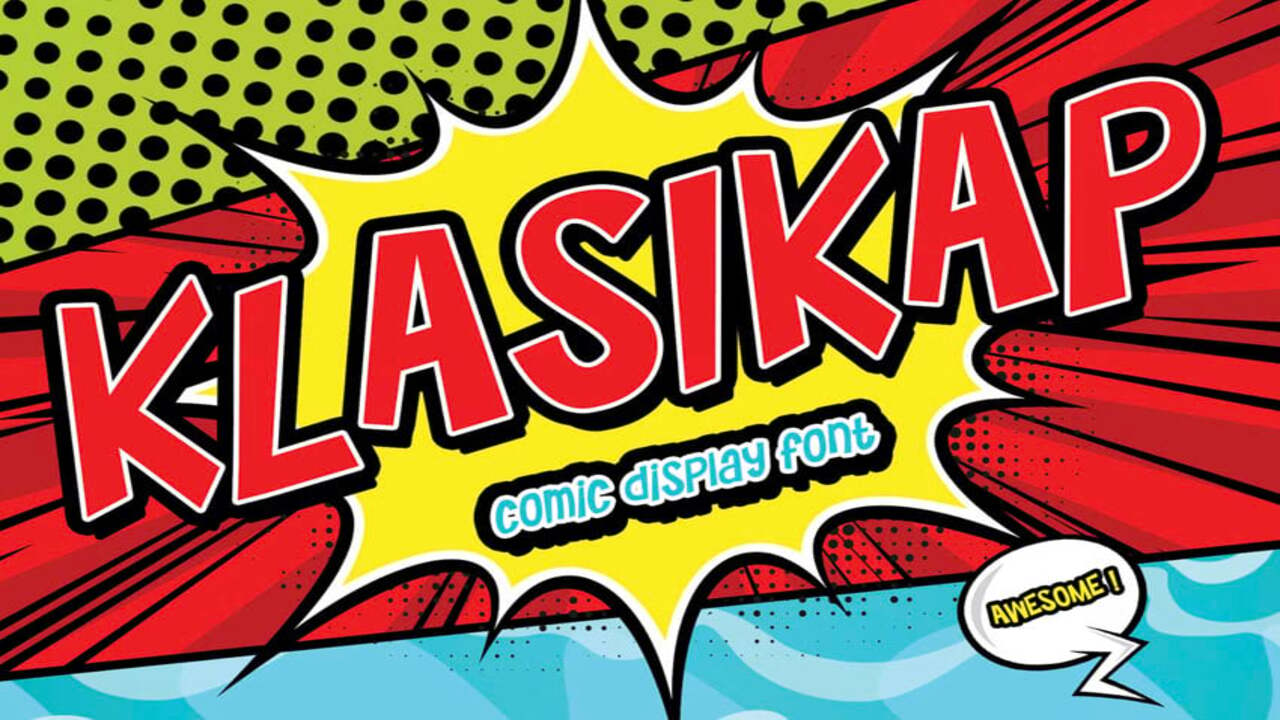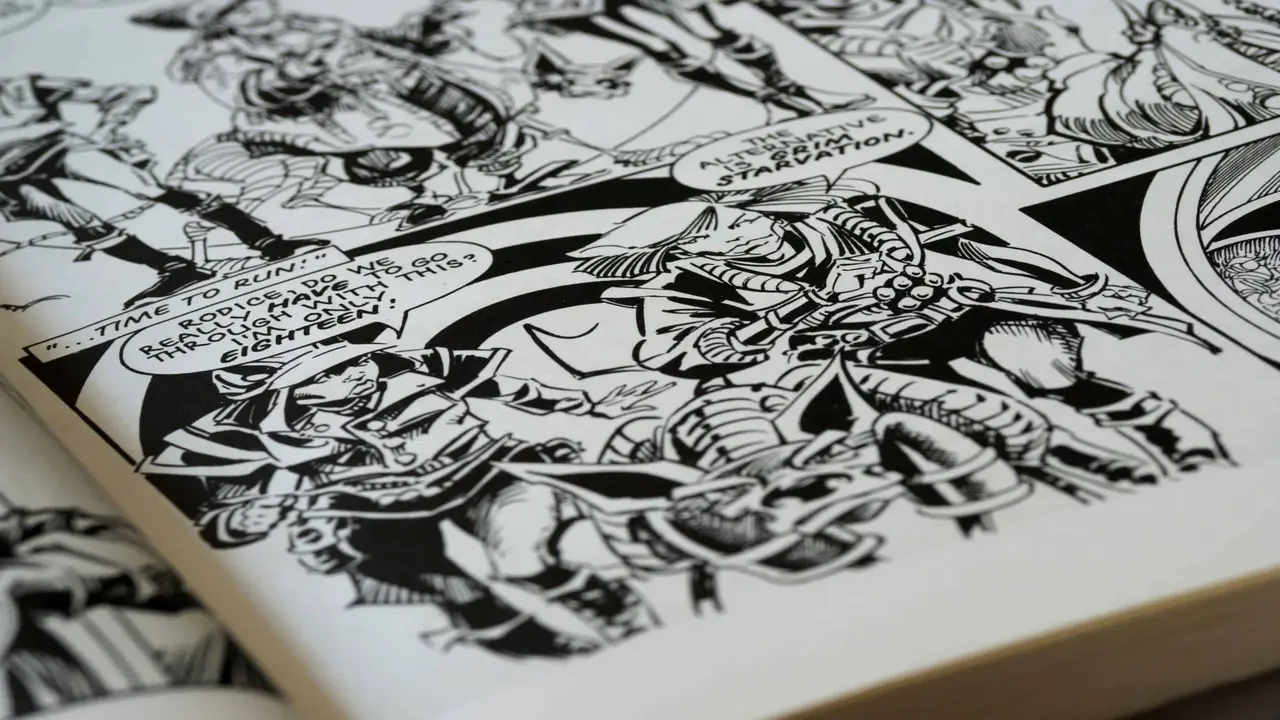Comic books have captivated readers for decades with their vibrant visuals and captivating storytelling. While the illustrations and dialogue play essential roles, another crucial element often goes unnoticed: the font used in comic books.
The choice of font significantly impacts the overall reading experience, as it helps convey emotions, sound effects, and characters’ unique personalities. Different fonts can evoke feelings of excitement, suspense, or humour, enhancing the narrative’s impact on readers.
Understanding what font is used in comic books is important for comic book artists, letterers, and enthusiasts alike. By selecting the right font, creators can effectively communicate their stories’ intended tone and atmosphere, ensuring an engaging and immersive experience for the audience. Exploring the feasibility of various font options and their appropriateness for different genres and themes can elevate visual storytelling and make comic books even more compelling.

Features Of Fonts Used In Comic Books
Fonts used in comic books have distinct features that set them apart from other fonts. They are often bold, with thick strokes and exaggerated serifs, making them easy to read and stand out on the page. Comic book fonts also tend to have a playful and informal feel, with unique shapes and designs that add to the story’s overall tone.
They often convey emotion and sound effects, such as bold and jagged fonts for action scenes or bubbly and rounded fonts for dialogue. Overall, using comic book fonts is an important aspect of visual storytelling in comics.
Types Of Comic Book Fonts
Designers create various types of comic book fonts specifically to enhance the visual storytelling experience.
Understanding the different types of comic book fonts allows creators to select fonts that align with the story’s tone, genre, and characters, enhancing the overall visual impact and immersing readers in the comic book world. Here are some common types:
- Balloon Fonts: People use these fonts for speech balloons that contain the dialogue or thoughts of the characters.
- Sound Effect Fonts: People use these fonts to depict onomatopoeic sound effects, such as “POW,” “BAM,” or “ZAP.” ” Sound effect fonts are often bold, dynamic, and creatively designed to visually represent the impact and intensity of the sounds.
- Narrative Fonts: These provide additional information or inner monologues in captions or text boxes.
- Handwritten Fonts: Handwritten fonts mimic the appearance of handwriting and add a personal touch to the dialogue or narration.
- Title Fonts: Graphic designers use title fonts for comic book titles, chapter headings, or cover art.
Exploring- What Font Is Used In Comic Books

Bold, blocky letters can convey action and excitement, while more delicate scripts can suggest romance or mystery. Comic book creators often spend a great deal of time choosing the right font to match the mood of their story. The way the font is placed on the page can also add to the overall effect. Here are some examples of what font is used in comic books:
- The most popular font in comic books is “Comic Sans MS”.
- Another popular font is “Comic Book” or “Comic Book Bold”.
- Both of these fonts are available for free download online.
- It’s important to choose a font that is easy to read and fits the tone of your comic.
- Avoid using overly decorative or complex fonts that may be difficult to read.
- Consider using different font styles for characters or dialogue to add personality and distinction.
- Adjust the font size and spacing for readability on different devices and formats.
- Use bold and italic formatting sparingly to emphasize important words or phrases.
- Avoid using all caps for extended dialogue, as it can be difficult to read and may come across as shouting.
- Test your font choices with a comic sample to ensure clarity and readability.
Trends In Comic Book Fonts

In the early days of comics, fonts were often hand-drawn and had a more traditional, classic look. As comics became more popular and mainstream in the 1960s and 1970s, fonts began to take on a more stylized and dynamic appearance, with bold lettering and exaggerated shapes. In recent years, a trend has been towards more modern, streamlined fonts that reflect the digital age. Some popular current fonts include Open Comic, Comic Sans, and Blambot Casual.
Best Practices For Using Fonts In Comic Books

There are a few best practices to keep in mind. First, choose a font that is easy to read and fits the tone of your comic. Avoid using too many different fonts, as this can make your comic look cluttered and confusing. Stick to using one or two fonts throughout your comic.
Additionally, ensure that you use a font size that can be easily read. Use bold or italicized text sparingly, as it can be difficult to read in large blocks. Finally, consider the placement and spacing of your text to ensure it complements your illustrations and doesn’t distract from the story.
Conclusion
The choice of font in comic books plays a pivotal role in enhancing the reader’s experience and conveying the intended emotions and atmosphere of the story. By carefully selecting appropriate fonts, comic book creators can achieve specific results, such as emphasizing action scenes, expressing character personalities, and creating unique sound effects.
The success of a comic book relies not only on its illustrations and narrative but also on the visual language conveyed through fonts. Understanding what font is used in comic books and making informed decisions regarding font selection can lead to engaging and immersive storytelling experiences that resonate with readers. Font specificity is of great importance because it enables creators to effectively convey their artistic vision and elicit the desired emotional responses from their audience.
FAQ’s:
How Do Fonts In Comic Books Contribute To The Storytelling?
Fonts in comic books contribute to storytelling by visually representing dialogue, sound effects, and character emotions. Different fonts can convey the characters’ tone, intensity, and personality, enhancing the reader’s understanding and emotional connection to the narrative.
Are There Specific Fonts For Different Comic Book Genres?
Yes, graphic designers tailor specific fonts for different comic book genres. For example, they commonly use bold and dynamic fonts for action-oriented comics, while they prefer whimsical and playful fonts for comedy or children’s genres.
Can I Create My Font For A Comic Book?
Yes, you can create your font for a comic book. Various software tools allow you to design custom fonts or modify existing ones to suit your artistic vision.
How Can I Ensure Legibility When Choosing A Font For My Comic Book?
When choosing a font for your comic book, it’s crucial to prioritize legibility. Select fonts that are clear, easy to read, and appropriately sized. Avoid overly decorative or intricate fonts that may hinder readability.
Can I Use Licensed Fonts From Popular Comic Book Franchises?
Using licensed fonts from popular comic book franchises typically requires permission from the copyright holders.

David Egee, the visionary Founder of FontSaga, is renowned for his font expertise and mentorship in online communities. With over 12 years of formal font review experience and study of 400+ fonts, David blends reviews with educational content and scripting skills. Armed with a Bachelor’s Degree in Graphic Design and a Master’s in Typography and Type Design from California State University, David’s journey from freelance lettering artist to font Specialist and then the FontSaga’s inception reflects his commitment to typography excellence.
In the context of font reviews, David specializes in creative typography for logo design and lettering. He aims to provide a diverse range of content and resources to cater to a broad audience. His passion for typography shines through in every aspect of FontSaga, inspiring creativity and fostering a deeper appreciation for the art of lettering and calligraphy.

